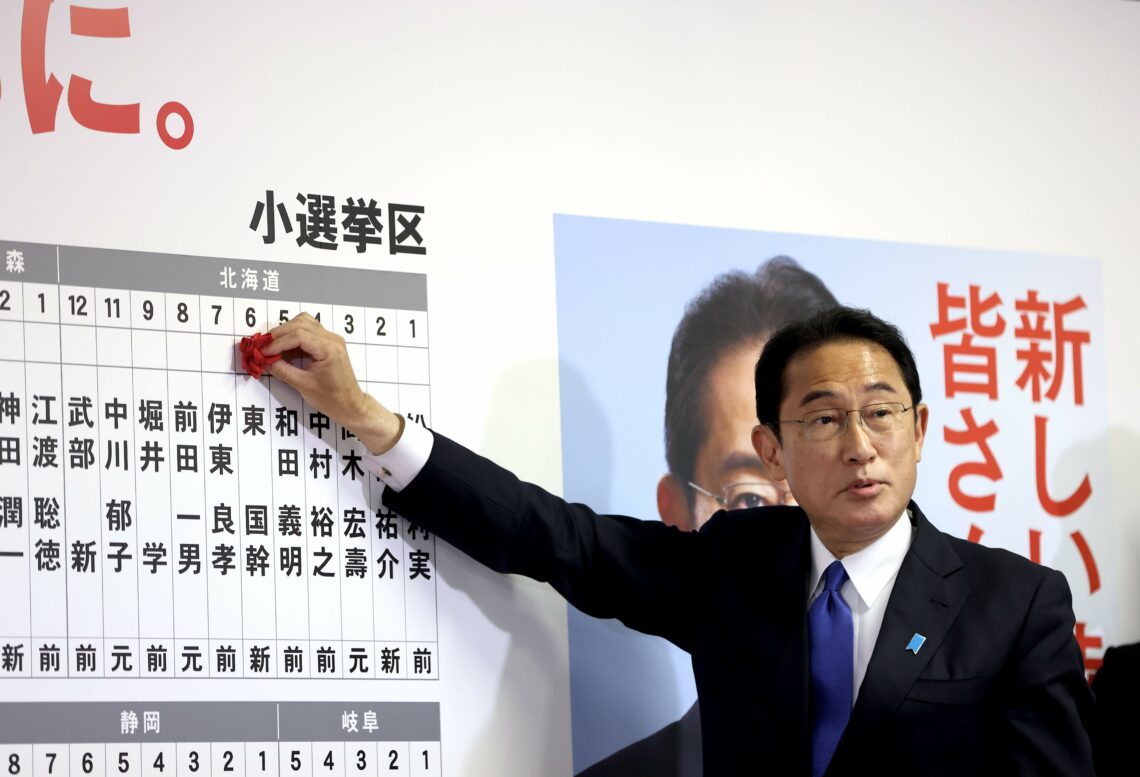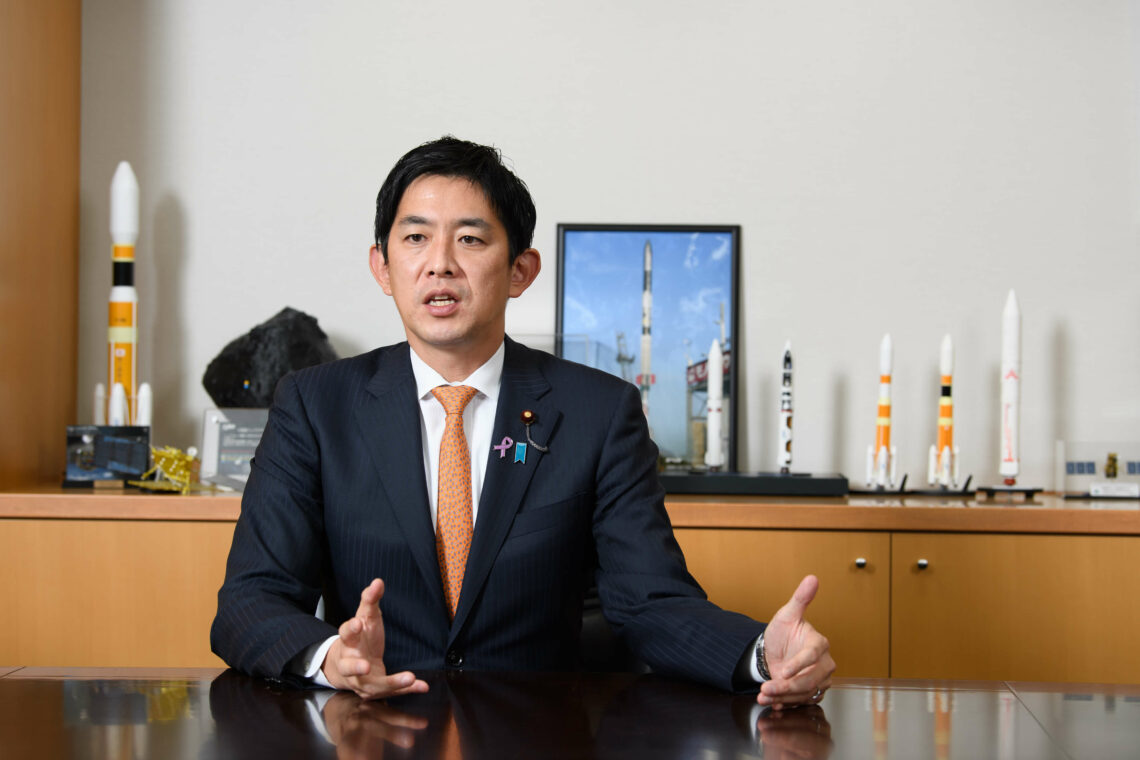Japan’s push for economic security
Critical of Abenomics, new Prime Minister Fumio Kishida wants to implement a broad range of measures to boost economic security in Japan. While his party’s majority in parliament will give him free rein for the time being, he will soon face another election.

In a nutshell
- Prime Minister Kishida has an ambitious economic strategy
- The new budget will finance business and research
- Fund recipients will be under greater scrutiny
Since Covid-19 began to spread, there has been much discussion in Tokyo about economic security, what it means, and how to achieve it.
Economic security is a subjective concept. The words may mean one thing in Tokyo and another in Washington, Brussels or Beijing. In Japan, it is a matter of diversifying supply chains and promoting local industry. It entails investing in next-generation technologies but also making sure critical infrastructure, like telecommunications, is secure.
After Prime Minister Fumio Kishida’s Liberal Democratic Party won a comfortable majority in Japan’s recent general election, the government now has some political capital to promote its economic security strategy. Like his predecessors, Mr. Kishida will be tasked with getting Japan’s economy growing again. To do so, his government will not only want to spend heavily over the next couple of years, investing in fields like research and development. It will also explore ways to prevent research and technology from falling into the hands of its economic and strategic competitors.
National strategy
Japan is an island nation with limited resources. The growth of neighboring economies and global trade over the last few decades have made Japan even more reliant on foreign sources for production. The Covid-19 pandemic reminded governments and businesses around the world that complex supply chains are more vulnerable to disruptions. While Japanese officials understand there are limitations to bringing a significant chunk of manufacturing back to Japan, it has not stopped them from trying. The government has adopted a more targeted approach, focusing on industries and goods more at risk, or those of national interest.
With Japan’s recent election, a lot more emphasis has been placed on the country’s economic future.
Japan has been exploring ways of building its supply chain resiliency for over a decade now. In 2010, when China cut its rare earth metal exports, the Japanese government began looking to diversify its supply. This led to an investment in an Australian rare earth mine. Later, with the 2011 Fukushima disaster, Japanese companies, particularly automobile companies, learned not to rely too heavily on one region as a source of production.
When Covid-19 struck and personal protective equipment (PPE), like face masks, were in short supply, the government initiated a new program to bring some of that manufacturing back to Japan. The initiative also subsidized companies moving out of China and has been called Japan’s “exit strategy.” Ten percent of the allocated 220 billion yen ($1.9 billion) were for companies planning to move to south and southeast Asia, and 90 percent of funds were for companies moving back to Japan.
Besides face masks, other industries that could receive a subsidy included other PPE manufacturers, as well as producers of semiconductors, aircraft, vehicle batteries and metals. It was recently reported that the government will also subsidize half of a new microchip project with Taiwan Semiconductor Manufacturing Company, and possibly a project with Micron Technology. These investments will require additional spending, since foreign companies are not eligible for the aforementioned subsidies.
It should come as no surprise that many of the industries, particularly semiconductors, have also been investigated by the Biden administration for their supply chain vulnerabilities. The United States and Japan, along with Australia and India as a part of the Quadrilateral Strategic Dialogue, have agreed to strengthen all these sectors. Japan, Australia, and India have also recently launched their own dialogue called the Supply Chain Resilience Initiative. The alliance aims to expand digital technology and diversify trade and investment opportunities.

Mr. Kishida’s Liberal Democratic Party has also been discussing whether to introduce new legislation for an economic security law. This could include provisions not only to boost manufacturing but also to encourage the development of new technologies.
Soon after becoming prime minister, Mr. Kishida established a new cabinet secretary and minister of economic security, currently held by Takayuki Kobayashi. According to him, Tokyo’s goal is to make Japanese industry indispensable in global value chains. A similar view is held by Akira Amari, former secretary-general of the Liberal Democratic Party, who has been very vocal about building Japan’s economic security. According to Mr. Amari, Japan’s economy needs to be strategically autonomous and indispensable. But the politician also lost his position after Japan’s latest election, so it will be up to Mr. Kobayashi to lead on the issue.
Japan has learned that while it cannot become a manufacturing powerhouse like China, it can become strategically indispensable by dominating choke points along various supply chains. For example, in 2019, Japan limited the export of three chemicals – fluorinated polyimides, photoresists and hydrogen fluoride – to South Korea, threatening their semiconductor manufacturers. The U.S. has a similar approach with China, both limiting its own exports and asking the Dutch government to limit the export of essential semiconductors and semiconductor manufacturing machines to China.
New capitalism
With Japan’s recent election, a lot more emphasis has been placed on the next steps in the country’s economic future and how to increase growth. Mr. Kishida’s platform includes measures to create what has been dubbed Japan’s “new capitalism.” Critical of the last eight years of former Prime Minister Shinzo Abe’s economic policy, commonly known as Abenomics, the prime minister wants more growth but more equitable distribution as well, like higher wages for workers and lower costs for services like day care and schooling.
The next step for the government will be passing a budget through parliament.
To help realize this “new capitalism” before the end of the calendar year, the Kishida administration could push for an extraordinary budget in the trillions of yen. Tokyo wants to expand Japanese investment in research and development. The government has discussed setting up an advanced technology fund that would invest in artificial intelligence, biotechnology, robotics and other technologies that have dual-use commercial and military applications. But Japan also wants to make sure the products of this research and development do not fall into the wrong hands, and universities that receive government funding for research grants will probably be under greater scrutiny.
The Kishida government will also be investing in the digital transformation of Japan. The aim falls under both the push for economic growth and the increasing concern for Japan’s economic security. Like research and development, Tokyo sees investing in new digital technologies as the next step in Japan’s economic future. But digital technologies, like the telecommunications industry, can be rife with uncertainty. For the government of Japan, this means making sure that the next generation of digital technologies comes from trusted vendors, to reduce the risk of malicious cyber activities and unwanted access to citizens’ personal information.
Scenarios
The next step for the Kishida government will be passing a budget through Japan’s parliament. It will likely include all sorts of financial incentives and handouts, not just for Japanese citizens but businesses as well. There will probably be budget requests to increase research and development, including grants to universities and companies that accept government contracts. There will also likely be provisions that support foreign investment in manufacturing.
Shortly after passing a budget, or in the next fiscal year starting in April, the Japanese government will turn its attention to ensuring that its investments in research and development are not at risk of falling into the hands of its economic and strategic competitors, especially in China. This means greater transparency and reporting on where government research grants are going, who is accepting them, what sort of influence foreign entities have over their work, and so on. Still, for the new government, revitalizing the Japanese economy comes first. Prime Minister Kishida will not have long to implement his strategy before next summer’s election.








